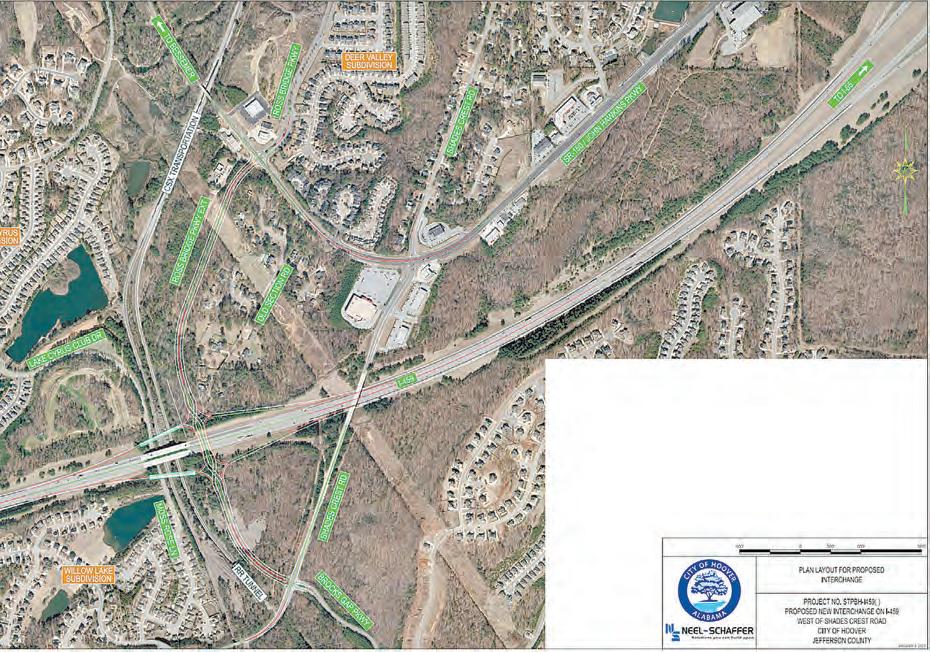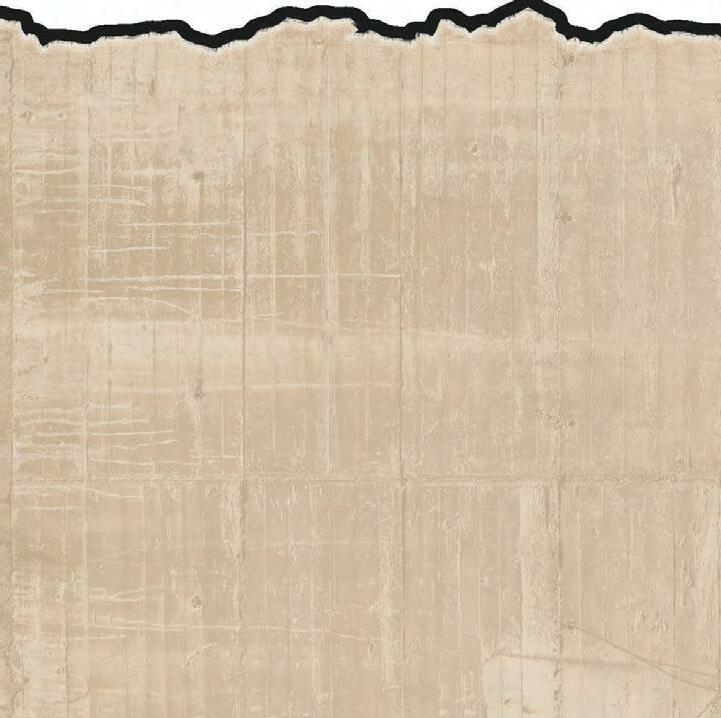
2 minute read
Council OKs plan for $120 million I-459 interchange
By JON ANDERSON
The Hoover City Council has approved an agreement with the state outlining how a new Interstate 459 interchange will be built just southwest of the South Shades Crest road overpass, to be called Exit 9.
The agreement as of mid-January still had to be signed by Gov. Kay Ivey, but this is a big step in the process toward getting the interchange built.
Perhaps an even bigger step that went largely unnoticed this past fall was the Federal Highway Administration giving substantial approval for the interchange. Assistant City Engineer Blake Miller said the city received that letter from the federal government on Nov. 14 after submitting an interchange justification study for federal review.
The only contingency was that an environmental impact study still needed to be submitted and approved by the Federal Highway Administration, Miller said.
The agreement approved by the Hoover City Council on Jan. 3 estimates the new interchange project will cost $120 million, including $5.5 million for land acquisition, $4.9 million for utility relocation, $3.5 million for preliminary engineering and $106 million for construction.
The city of Hoover would be responsible for $61 million, including all the costs for land acquisition, utility relocation and engineering and 44% of the construction cost, according to the agreement. The state, administering federal money, would pick up the other $59 million in construction costs.
City Council members have said they plan to pay for most of the city’s portion of the interchange by borrowing money with a warrant issue.
The council on Jan. 17 authorized the Frazer Lanier investment banking firm to prepare documents and a purchase contract necessary to facilitate plans to vote on a warrant issue estimated to be around $60 million to $90 million. The exact amount of the warrant issue had not been determined, and no decision had yet been made about which projects would be funded.
But Curt Posey, chairman of the council’s Finance Committee, said the primary projects being considered were the interstate interchange, a performing arts center and 3.4-acre park in the Patton Creek shopping center and upgrades to Hoover Metropolitan Stadium.
The city already has spent $5.27 million to buy 22 acres on the northwest side of I-459 and 31.3 acres on the southeast side. Some smaller tracts still need to be purchased, and some preliminary survey work has begun to determine the exact tracts needed, Miller said. Once the governor signs off on the agreement, engineers can get busy with in-depth engineering plans, he said.

It should take a couple of years to finish the engineering work so the project can be bid out for construction, Miller said. The state will seek the bids, he said.
The interchange will include two ramps on each side of the interstate (two of which will have bridges over CSX railroad tracks on the southwest and northwest side of the interchange), Miller said. There will be a bridge over the interstate and a new lane of traffic between Exit 9 and Exit 10 (John Hawkins Parkway) on both the northbound and southbound sides of the interstate, he said.
This map shows the preliminary layout planned for a new Exit 9 on Interstate 459, just southwest of the South Shades Crest Road overpass. It includes a plan for a road over the interstate that connects Ross Bridge Parkway with Brock's Gap Parkway, as well as a new northbound lane and southbound lane on Interstate 459 between the new Exit 9 and Exit 10 (John Hawkins Parkway). Map courtesy of Neel Schaffer.


City officials believe the new interchange will help relieve traffic congestion on other roads, such as South Shades Crest Road, Shelby County 52 and Alabama 150.
Regarding the warrant issue, city officials were estimating the most they would borrow would be about $93 million, and that would be well under the city’s debt limit, Posey and Rice said. The debt package being considered would not require a tax increase, and the city’s annual debt payments would remain at about $13 million a year, Rice said.
With a solid credit rating and strong reserves, the city is “in a fantastic position to borrow money,” Posey said.










